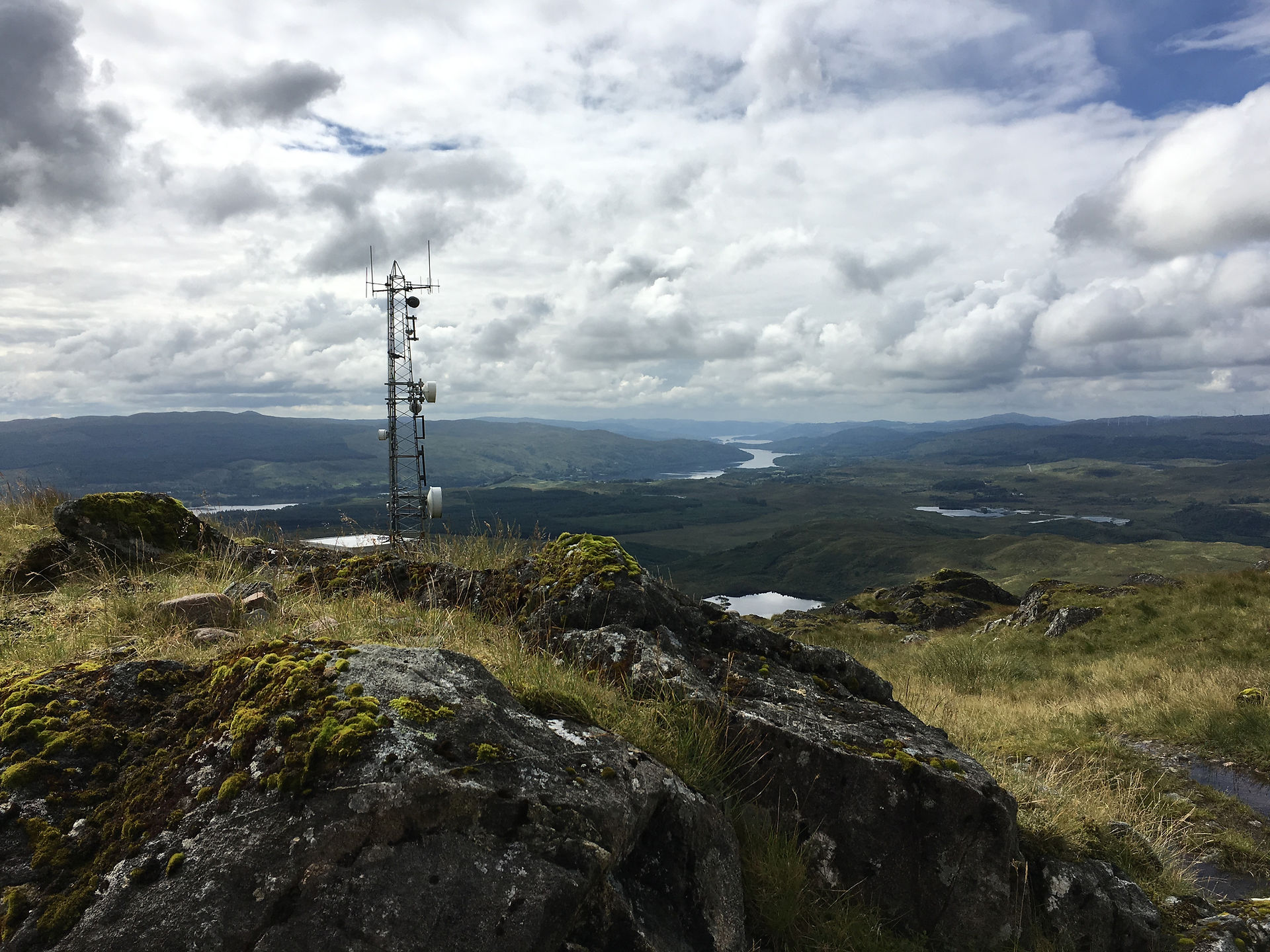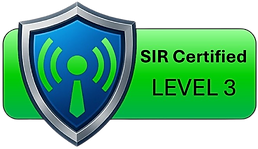

Secure Industrial Radio
Certification
Closing the hidden security gap in industrial radio networks.
Securing Industrial Radio for Critical Infrastructure
Radio in an everyday scenarios.
You press a button on your car key fob. Click. The lights flash, and the doors unlock.
You swipe your building access card. Beep. The gate slides open.
Your garage door lifts smoothly with a single remote command.
Convenient, right? But what if someone nearby was listening?
With inexpensive, readily available tools, attackers can easily intercept those signals, clone them, and replay them. That’s how car thefts happen in seconds, garage doors are opened without keys, and gated entries are bypassed.
Now, take that same concept—and apply it to something far bigger.
Video Introduction to SIR Certification
Watch how a single intercepted radio signal could disrupt critical infrastructure—and how SIR stops it.
From Consumer Gadgets… to Critical Infrastructure
Across the UK and worldwide, radio signals don’t just unlock doors—they control the hidden machinery that keeps society running.
They are the invisible threads linking control rooms to remote, unmanned sites, carrying commands that start, stop, open, and shut down the essential services we rely on every day.
✅ Start and stop pumping stations that maintain water pressure across entire towns
✅ Adjust chlorine dosing valves in treatment plants to keep drinking water safe
✅ Open and close sluice gates and flood defences during heavy rainfall
✅ Trigger emergency turbine shutdowns in energy networks to prevent overloads
✅ Switch critical circuits in substations powering hospitals, schools, and homes
✅ Control railway signals and level crossings guiding thousands of passengers safely
✅ Activate remote fuel or chemical injection pumps in oil, gas, and manufacturing sites
Each of these actions is triggered by a simple radio command. For decades, these signals have been trusted—reliable, easy to maintain, and “out of sight, out of mind.”
The Hidden Risk
Much of the UK still relies on these legacy, unsecured radios—leaving critical services exposed to avoidable threats
⚠️ Many industrial radio systems were designed in a different era, long before cyber threats were even considered.
⚠️ They still send basic, unauthenticated commands that can be intercepted and copied.
⚠️ With inexpensive 'off-the-shelf' tools like SDR dongles, attackers can listen, capture, and replay these signals—with no knowledge of the protocol.
And the consequences can be severe:
❌ A single spoofed command could flood a village by activating pumps at the wrong time
❌ Contaminate a water supply by overdosing chlorine levels
❌ Shut down parts of an energy grid, causing blackouts
❌ Send false signals on a railway network, delaying or even endangering passengers
Because these commands are sent over the air, they leave no trace of tampering—the system sees them as legitimate.
So how do we stop this?
The reality is simple: a legacy radio designed without encryption, authentication, or replay protection cannot be made secure by configuration alone.
SIR Certification isn’t a software patch or a quick fix—it’s a measurable security benchmark. To meet it, the radio itself must support:
✅ Encryption – ensuring every command is private and unreadable
✅ Authentication – verifying only trusted sources can issue commands
✅ Secure Key Rotation – preventing long-term exposure of compromised keys
✅ Replay-Attack Mitigation – blocking intercepted signals from being reused
Older radios simply weren’t built for these controls. That’s why SIR Certification requires radios with proven, integrated security features.
The good news? ELPRO radios already meet these standards. They have been deployed in critical infrastructure worldwide for years with Level 3 protection built-in—AES-256 encryption, authenticated firmware updates, secure key management, and replay-attack prevention as standard.
While ELPRO radios are the benchmark, SIR Certification is vendor-neutral. Other radio manufacturers’ products can also be assessed against the same strict criteria, and if they meet the framework’s requirements, they too can achieve SIR compliance.
For the UK and other regions still running legacy, unprotected radios, upgrading to SIR-compliant technology is the only way to close the security gap and ensure the resilience of critical infrastructure.
Why SIR Certification Goes Beyond Spectrum Regulation
In the UK, Ofcom regulates and manages the radio spectrum, ensuring critical services like water and energy utilities have access to reliable, licensed frequencies.
They monitor for interference and investigate illegal jamming, but their remit stops at spectrum integrity—not cybersecurity. Ofcom does not enforce encryption, authentication, or replay protection on the data carried over those frequencies.
SIR Certification fills this gap. It focuses on the cybersecurity of the radio payload itself, introducing layered protections like AES encryption, key rotation, and command authentication—controls that go far beyond spectrum licensing. Where Ofcom ensures the airwaves are “clean,” SIR ensures the signals are secure.



How SIR Certification Works
SIR Certification is structured into three progressive levels, allowing operators to build security step by step, from basic protections to advanced, enterprise-grade safeguards.
Level 1 – Basic Protection
For minimal-risk, legacy-friendly upgrades
-
Unique device IDs to prevent generic “any device” control
-
Removal of default passwords and insecure factory settings
-
Fail-safe defaults so equipment reverts to a secure state if communications are lost
-
Basic access control to prevent unauthorised local connections
This level raises the absolute minimum bar, ensuring even basic radios are not completely exposed.
Level 2 – Intermediate Protection
For critical functions where secure communications are essential
-
AES-128 or AES-256 encryption of all radio traffic
-
Message authentication codes (MACs) to verify integrity
-
Protection against replay attacks through nonce/counter mechanisms
-
Secure over-the-air firmware updates with signed images
-
Role-based access control for operator and maintenance accounts
Level 2 stops most RF interception and manipulation attacks, making it suitable for most modern industrial sites.
Level 3 – Advanced Protection
For high-risk environments, compliance, and regulator assurance
-
Strong AES-256 encryption with dynamic key rotation
-
Digital signatures on every command for full authentication
-
Device whitelisting by IP, MAC, or serial number
-
Continuous anomaly detection and tamper alerts
-
Secure, centralised provisioning and diagnostics
This level is designed for the most critical sites, where disruption or tampering could cause major environmental, financial, or safety impacts.
ELPRO radios already meet Level 3 out of the box, providing encryption, authentication, replay mitigation, and secure key management.
With this tiered approach, SIR Certification gives operators and regulators a clear, testable assurance model, enabling gradual security improvement while maintaining operational reliability.
© 2025 Spotcom Ltd. All rights reserved.
SIR Certified™ and its associated certification levels are trademarks of Spotcom Ltd.
The name, logo, and certification marks are protected under UK intellectual property law.
Unauthorised use, reproduction, or distribution of these marks is strictly prohibited.
You are welcome to share or reference this content for awareness or educational purposes, provided attribution to Spotcom Ltd. is maintained and the material is not altered or misrepresented.
.png)



